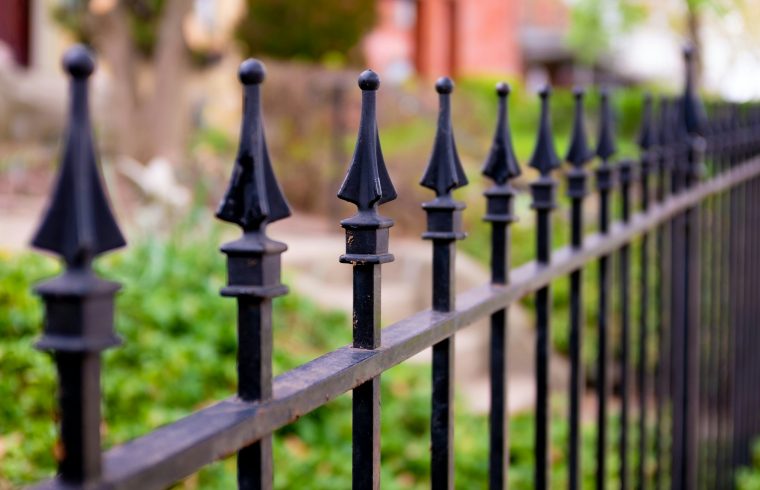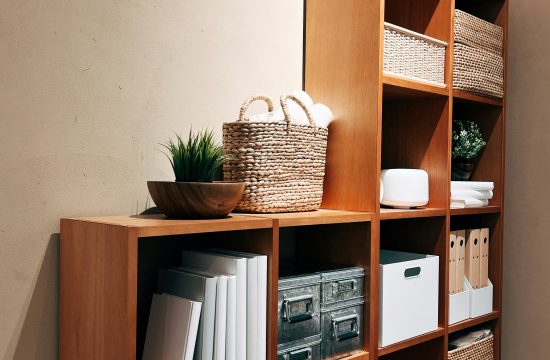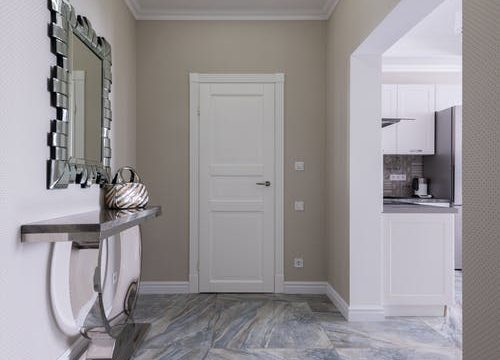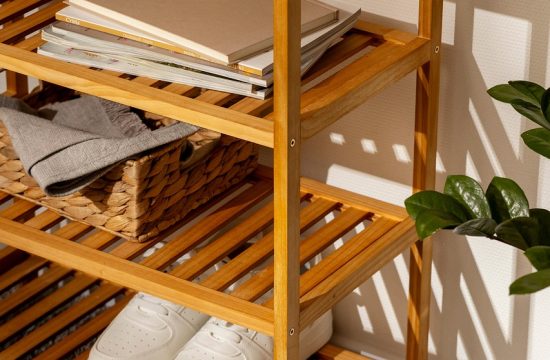Iron fences are a popular choice for many people because they look elegant and sturdy, and they can make a home look more luxurious. However, despite their many advantages, iron fences face one major challenge that is often difficult to overcome: rust.
Sunlight, rain, and humidity can speed up the process of rust, making the fence look dull, brittle, and unattractive. If you don’t take care of your iron fence, it can quickly wear out and require a significant budget to repair it.
Regular maintenance is essential for keeping iron fences beautiful and durable. From cleaning to using special protective paint, every small step can make the fence last longer and keep it looking new.
Keep your iron fences clean by cleaning them regularly
To prevent rust, it’s important to regularly clean your home’s iron fences. Things like dust, mold, water deposits, and oil can damage the protective layer of the iron. If you let this dirt build up, the fence could rust and corrode. Cleaning removes anything that could damage the iron.
It is recommended that you clean the fence at least once every two weeks using a cloth or soft brush and mild soap. This cleaning frequency is effective in keeping the fence surface clean and free from stubborn dirt buildup. If you keep the fence clean, the wrought iron fence will always look clean and well-maintained, and it will last longer.
Repaint with Rust-Proof Paint Regularly
One of the best ways to protect iron fences from rust is to regularly repaint them with a rust-proof paint. This coating creates a protective layer that prevents water and oxygen from coming into direct contact with the iron surface, which is the main factor causing rust. Ideally, repainting should be done at least once a year to ensure maximum protection. In addition, rust-proof paint also protects iron from exposure to sunlight and rain, which can accelerate the deterioration process of the material.
Choose paint that contains lead or zinc, as these two components are proven to protect iron from rust. The paint coating not only provides physical protection against external elements but also chemically inhibits the rust formation process. In addition to painting, it is also recommended that you use lubricating oil periodically. This is useful for maintaining the shine of the fence as well as overcoming squeaking sounds on the hinges, thus providing the additional protection needed to keep the durability of your iron fence.
Check and Repair Paint or Rust Damage Early
Regular checks on iron fences are important to detect minor damage before the problem develops into something more serious. Be sure to periodically check parts of the fence that may be starting to peel, crack, fade, or show signs of rust spots. If you find any damaged sections of the fence, repair them immediately. Sanding the peeling or rusted area is a crucial first step to remove light rust and prepare the surface for painting.
Once the sanding process is complete, recoat the area with a new coat of protective paint or rust-proof paint. This quick and appropriate action will prevent rust from spreading to other parts of the fence, thereby maintaining its overall structural integrity and aesthetic appearance. Repairing damage early on will also save time and money that may be required for major repairs in the future. Therefore, it is important to always maintain your iron fence to keep it in good shape.
Remove Plants from Fences, Especially Climbing Plants
Plants, especially climbing varieties, although attractive, can pose an invisible threat to iron fences. These plants can retain high moisture between their leaves and stems, which can potentially accelerate corrosion of iron materials. Moisture that continuously clings to the surface of the fence creates ideal conditions for rust formation. In addition, some climbing plants can grow around the fence, which can cause friction and damage the existing protective paint layer.
To avoid this problem, it is important to ensure that there is sufficient distance between the fence and the surrounding plants. If you have vines, it is best to manage their growth so that they do not directly attach or entwine themselves around the iron fence structure. By taking these steps, you can reduce excessive moisture exposure and keep the fence dry. This will help slow down the rusting process and maintain the beauty of your iron fence.
–sh












